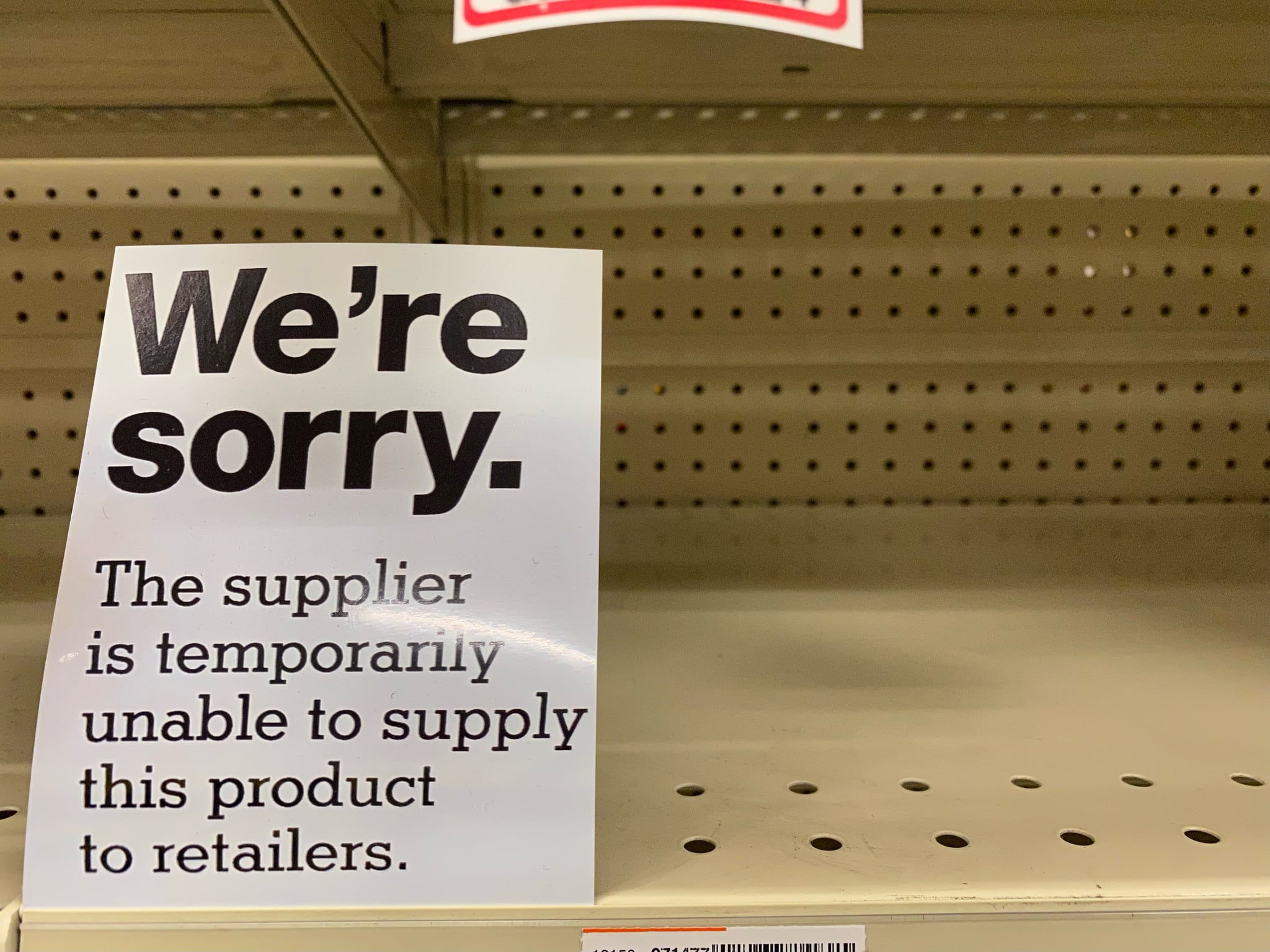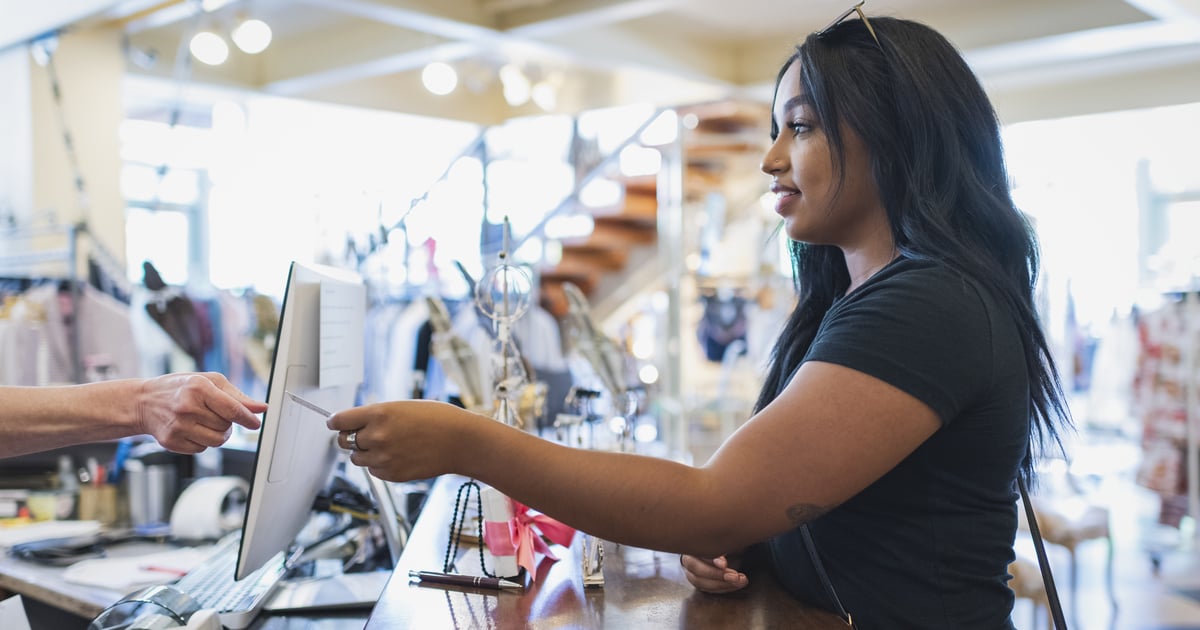Table of Contents
Walking down the aisles of your favorite beauty retailer or drugstore, you may have noticed more items are out of stock than usual. Not only that, but the items that are on the shelves seem to have gone up a dollar or two in price. What you’re seeing are the effects of the global supply chain crisis.
Everyone, from politicians to brand founders, newscasters, and your great uncle at the holiday dinner table, has been going on and on about it for months now, but consumers are finally starting to feel the trickle-down effect. The issue is multifold. It’s not just a problem with ingredient sourcing, or employment, or manufacturing, or importing — it’s everything, all at once.
To break down exactly what’s happening with the global supply chain shortage (and why), plus how it will impact the way you shop for beauty products in 2022, we spoke to a few industry experts.
What’s Happening With the Global Supply Chain Shortage?
The problem with the global supply chain is incredibly complex. It started with the COVID-19 pandemic in the fall of 2019. Although we didn’t feel the effects of the pandemic directly in the US until March 2020, many manufacturers could see what was coming on the horizon way before that.
“We just didn’t know how long we were in for,” Morrishane Collins, head of global sales at Godrej North America, told POPSUGAR. The closing of factories caused a buildup of orders, and when factories were finally able to resume operation, they had to ramp up production to meet the influx of orders that had accumulated. “Suddenly, once that very finely tuned mechanism falls out of place, everybody wants to jump back in,” said Rohan Widdison, founder and CEO of beauty manufacturer New Laboratories, which creates products across the skin-care, makeup, hair-care, and body-care categories in Australia.
Manufacturers have rapidly increased production to try to meet demands, which has put unprecedented stress on freight forwarders who ship the goods, and there are only so many boats. “There’s just so much demand and not enough supply,” said Britt Martin, head of marketplace and supply at Novi, a company that employs a team of scientists, sustainable packaging experts, contract manufacturers, and suppliers. This has created a volatile environment for freight forwarding, the process of shipping goods via boat. As if securing already-limited space wasn’t hard enough, bigger companies can outright buy and reserve multiple cargo containers, which they then use to ensure their delivery arrives on time, even if the shipping boxes aren’t full.
“You have the delays in manufacturing, increased costs, and then in some cases, just unavailability. There’s a lot of these issues happening all at once, it’s almost a perfect storm.”
To combat the issue, many companies have looked to air cargo as a means to move product — but air cargo is, and always has been, far more expensive. Translation: brands that go this route will have to bake in those extra costs somewhere to turn a profit, and that may just be in the retail price of their products. Not to mention, air-cargo companies faced the same shutdowns and delays as freight forwarders during the pandemic, which means they’ve increased their prices even more to meet demand. Liah Yoo, founder of Krave Beauty, a K-beauty company that makes all of its products in South Korea, said the company saw prices for air cargo increase ninefold since 2019. Still, the upside to air cargo is that it does at least provide a guaranteed time of arrival — something you can’t get with freight forwarding.
Delays don’t stop there. Even if brands do get a spot on a ship, they then run into holdups at the port with offloading, which can best be described as a traffic jam, Martin explained. Multiple ships are lined up, waiting to offload, but there isn’t enough room, nor enough crew members, to assist. According to Yoo, it normally took about two weeks for a shipment to arrive from South Korea. Now, it can take around three months to arrive. That means sold-out products don’t get restocked as quickly.
The global supply chain shortage touches every phase of production — not just finished goods on their way to store shelves. The industry is experiencing problems with the sourcing and distribution of raw materials, getting access to staple ingredients (think: glycerin, emulsifiers, oils) and packaging components (this includes every little piece, from the pumps and caps to the labels). “You have the delays in manufacturing, increased costs, and then in some cases, just unavailability,” Widdison said. “There’s a lot of these issues happening all at once, it’s almost a perfect storm.”
That said, while the issue is global, it’s hitting various countries differently. Even with all of the delays and holdups happening right now, it still is significantly easier to import and export goods from the US, China, and parts of Europe. The Middle East, on the other hand, is seeing even longer lead times than usual (and the area has always had significantly longer wait times). “We don’t want to shortchange our customers that are on a small island from getting product,” Collins said, but in the end, they just need to get product on shelves somewhere.
How the Global Supply Chain Shortage Is Affecting Beauty
So, what does all this mean? Just like the problem itself, the answer is complex. The main problem that consumers will face — and probably already have begun to face — is things being out of stock, and staying out of stock for longer. The problem with that for brands — aside from the obvious: not being able to make money — is the average consumer doesn’t understand all of the scrambling that’s happening behind the scenes to fill orders and get product from point A to point B. “You can’t not have the product — that’s not an option for a consumer,” Collins said. We as shoppers don’t want to go to the store to restock on our go-to shampoo or face wash only to find that it’s unavailable.
 Image Source: Getty
Image Source: Getty
This leads us to the other primary effect of the supply chain shortage: price hikes. With the long list of hurdles that companies are having to jump through, price increases are unavoidable. Brands have been experiencing an increase of cost at every level and that can only go on for so long before we see the market price go up simply to cover logistics alone.
Brands aren’t taking the decision lightly. “I am so impressed with how brands have stepped up to try to assume the responsibility or the extra cost itself,” Martin said. Collins added: “We squeeze as hard as we can internally, and when we get to a point where we cannot squeeze . . . they’re inevitable.” But by how much? Widdison predicts the prices for many beauty products will go up anywhere from $1 to $3 per unit.
In some instances, it’s not as simple as just tacking on a few extra bucks to the overall price. For brands carried in major retailers like Sephora, Ulta Beauty, Nordstrom, and Target, they may not be permitted to go up in price for many reasons. “Retailers do all they can to hold back,” Collins said. Especially when specific price categories are involved. For instance, if a brand was pitched to Target with an affordable $20-and-under price point, increasing even my $1 can price it out of that bracket.
Demand will play a big role in this decision. If a product is hot and the demand is there, prices may be allowed to increase. “If you’re in a very competitive sector, I think those brands are going to have to wear it for the short-term and see what 2023 looks like,” Widdison said.
Bigger beauty conglomerates may be able to weather the price changes easier by eating the cost in their margins, but the same can’t be said for smaller, independent brands. “It impacts the financial health of the business,” Yoo said. “Not only the top line — the revenue of the business — but also the bottom line as well.”
What Are Beauty Brands Doing to Combat Global Supply Chain Crisis?
For the most part, brands are doing everything they can to lower the burden on consumers and to preserve the shopping experience they know. In some instances, going direct to consumers and cutting out the middleman of beauty retailers (and the fees that come with them) is easier. In other cases, switching to a different pump applicator created in the States from the one traditionally imported can move production along. As can shrinking the label by a centimeter to help alleviate costs.
Swapping out an ingredient where possible and sourcing more things domestically are solutions that many companies have been seeking, but even those have limits. “There are certain parts of the world these materials come from, and there are no alternatives,” Widdison said.
Melissa Gonzalez, former Wall Street executive and leading marketing and retail executive of The Lion’esque Group, said she’s seeing more clients hesitant to open new brick-and-mortar stores or start new brands in fear of disappointing consumers. Instead, they’re getting creative with other ways to reach their audience. “Maybe it’s more of a lifestyle or marketplace environment where there’s an experience that way, and it’s not just relying on one brand supply chain,” she said. So, building a brand outside of just product development.
Another factor that brands are having to take into consideration is how the demand for certain products will change over time. According to Gonzalez, the industry is at risk of having an oversupply of items if they’re not careful, which can be hard to move later on once the call for certain things dissipates. This is especially true for trend-heavy categories and timely launches, such as limited-edition, holiday, and even seasonal items.
Some brands have deprioritized the creation of new products in an effort to just sustain their current portfolio, but even that can only go on for so long. “This is the thing about beauty: you can’t have beauty without innovation,” Collins said.
https://www.popsugar.com/beauty/supply-chain-crisis-beauty-product-prices-48674741
 fashion rec fashion wanted
fashion rec fashion wanted



